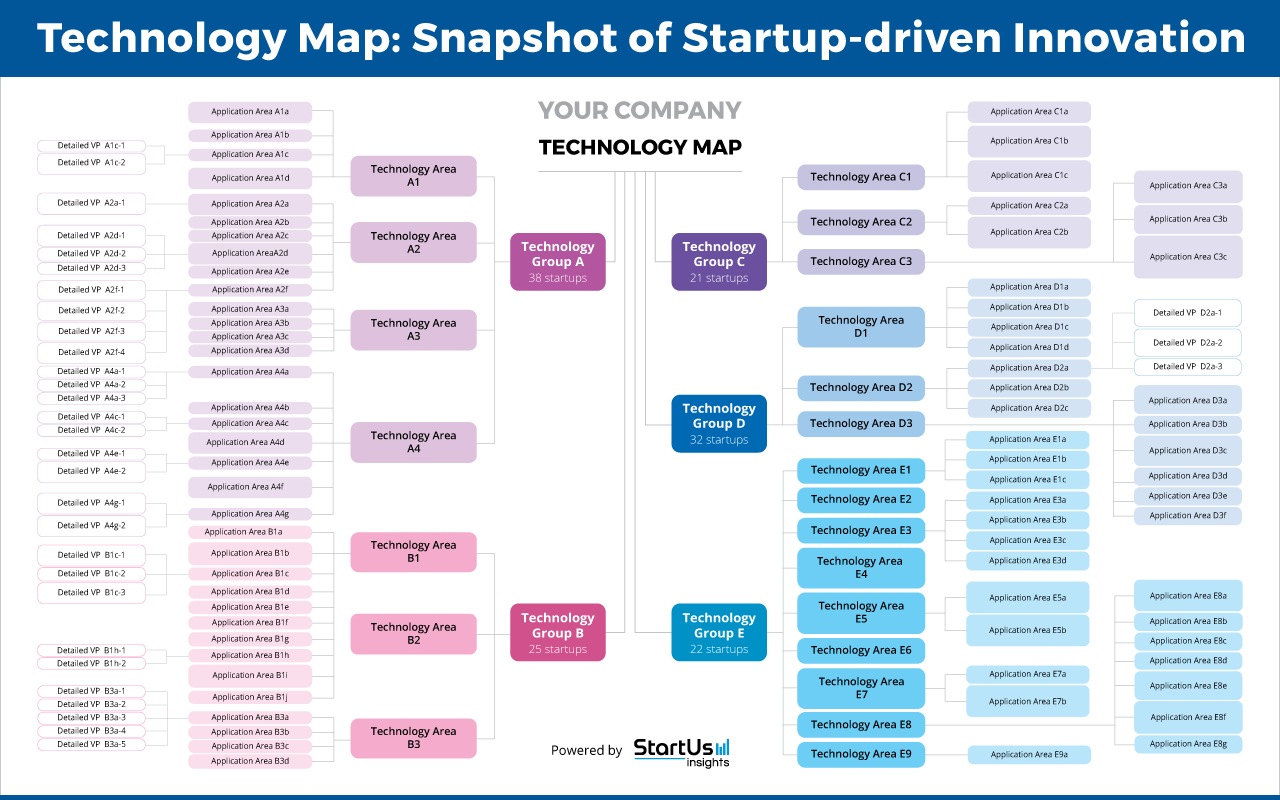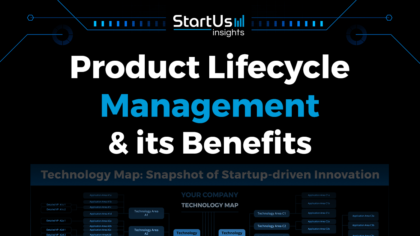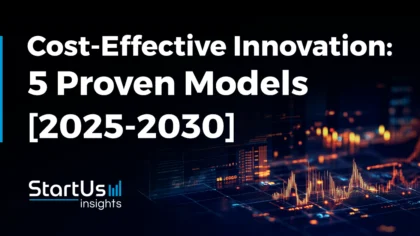Accelerate Productivity in 2025
Reignite Growth Despite the Global Slowdown
Companies today face high competitive pressure from rival companies and startups alike. Accelerating and optimizing product development is critical to gaining a competitive advantage. To streamline all processes from the ideation of a product to its commercialization, companies leverage product lifecycle management (PLM) solutions. A PLM solution acts as a centralized source of information across the entire product value chain, improving the speed and quality of processes.
Further, companies are increasingly adopting the open innovation paradigm wherein they seek innovations externally as well. This requires working with other entities such as relevant startups that align with a company’s innovation goals. Modern PLM solutions need to accommodate this trend. They need to centralize data from not just all business units within an organization but their startup partners as well.
Stages of Product Lifecycle Management
Depending on your industry, what matters for your product value chains may be different from companies in other industries. However, there are four major stages in PLM. Earlier, the process was strictly linear. But, now, insights from a later stage are often applied to previous ones. Moreover, sometimes the product is retired as well.
Product lifecycle management involves the following steps.
1. Ideation
The first stage involves coming up with ideas for new product development (NPD). Traditionally, innovation teams used to be separate business units within a company. However, now, more companies take a bottoms-up approach to innovation. This ensures that the ideation is closely linked to the pain points that the different teams face. Companies however look at external data sources as well to drive front end innovation.
Generally, this requires observing what the rival industry giants, as well as startups and scaleups globally, are doing. Data-driven technology landscaping allows companies to scan emerging technology trends to get a better picture of the horizon. Companies are also leveraging customer intelligence to identify changes in consumer preferences. Assessing competitors and customers places ideas in the context of what’s happening in the industry.
2. Development
After identifying the pain points, the next step involves identifying the technologies that can resolve them. At this stage, companies assess if they have the necessary expertise and infrastructure. Even when they do, it sometimes is cheaper to find a startup to build it. Through data-driven startup programs or startup scouting initiatives, companies find highly relevant startups and scaleups that build solutions that address their innovation needs.
After onboarding capable startups, companies need to figure out the logistics of developing a prototype. Often, a pilot program helps companies assess how the technologies can be integrated with their systems. Validation of prototypes or pilot programs provides insights into the strengths and weaknesses of the product.
3. Production
Initially, companies test the product to a limited group of internal or beta users. Feedback from these enables adjustments to design or other components. Later, companies evaluate how best to manufacture the product scale and which channels to use for distribution. In recent years, more companies are opting for gradual rollouts instead of major product launches. This reduces the risk for both users and manufacturers by limiting the impact of bad product launches.
4. After-sales Support
As businesses compete to retain existing customers while identifying new customers, after-sale support is of extreme importance. It provides insights into how the consumers use a product as well as which features need improvements. Companies also use after-sales support to guide their innovation strategy in an approach termed customer-based innovation.

Technology landscaping allows companies to source new product ideas as well as benchmark their existing projects with the latest technologies in the market.
Benefits of Product Lifecycle Management
1. Increases Productivity
PLM gets rid of a lot of redundancies across the product value chain. For example, different business units do not need to store data independently. This reduces the likelihood of missing or inconsistent data. Since everyone works with real-time and accurate information, they don’t have to waste time tracking changes or spotting errors. This increases productivity across the company.
2. Reduces Time to Market
As a consequence of improved productivity, product lifecycle management allows different teams to understand each other’s work and speeds up collaboration. For instance, design teams do not need to wait for manufacturing teams to send performance reports for prototypes. Eliminating data silos increases speed for all teams, thereby reducing the time to market the products. This, in turn, contributes to the competitiveness of a company.
3. Improves Product Quality
Often, poor product quality is an outcome of a mismatch between the expectations or execution of design and manufacturing units. This is especially true when the two teams are located in separate geographical locations. PLM resolves these issues, leading to better product quality. Further, implementing feedback from customers also enhances the quality.
4. Lowers Compliance Risks
Depending on the industry, products need to be compliant with a range of quality and safety standards. The complex data generated across the entire lifecycle of a product complicate compliance reporting. Owing to its emphasis on transparency across teams, the PLM process creates a single version of truth for all data. This simplifies reporting, thereby lowering compliance risks and reducing costs related to fees and fines.
Create Better Products with Innovation Intelligence
Curious about how product lifecycle management can impact your innovation processes or innovations in PLM? With data on 2,5 million startups & scaleups active globally, the StartUs Insights Discovery Platform searches the entire global innovation ecosystem to find the right startups and technologies for you. Based on your innovation goals, some of the deliverables that we provide include:
- Trend Map: Based on data-driven research, we classify emerging trends and group them into categories so you can see all of them at one glance.
- Trend Report: The Trend Report provides you with quantitative insights into the most impactful trends. Additionally, it presents exemplary startups advancing each trend.
- Startup Database: The Startup Database lets you discover a high number of innovative startups that are advancing the emerging technology trends in your industry.
Looking to leverage innovation to speed up product development? Get in touch today to find out how we use innovation intelligence to help you achieve that!

![Business Resilience Planning: 10 Strategies & Technologies to Tackle the Current Market [2025-2026]](https://www.startus-insights.com/wp-content/uploads/2025/06/Business-Resilience-Planning-SharedImg-StartUs-Insights-noresize-420x236.webp)
![10 Biggest Business Trends: What to Invest in, Build, and Watch Closely [2025-2030]](https://www.startus-insights.com/wp-content/uploads/2025/06/Business-Trends-SharedImg-StartUs-Insights-noresize-420x236.webp)




